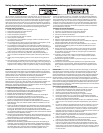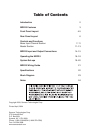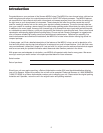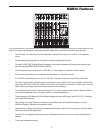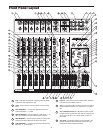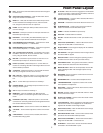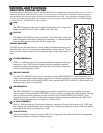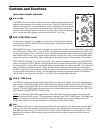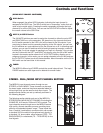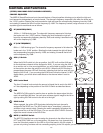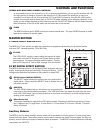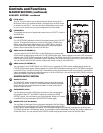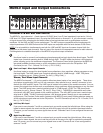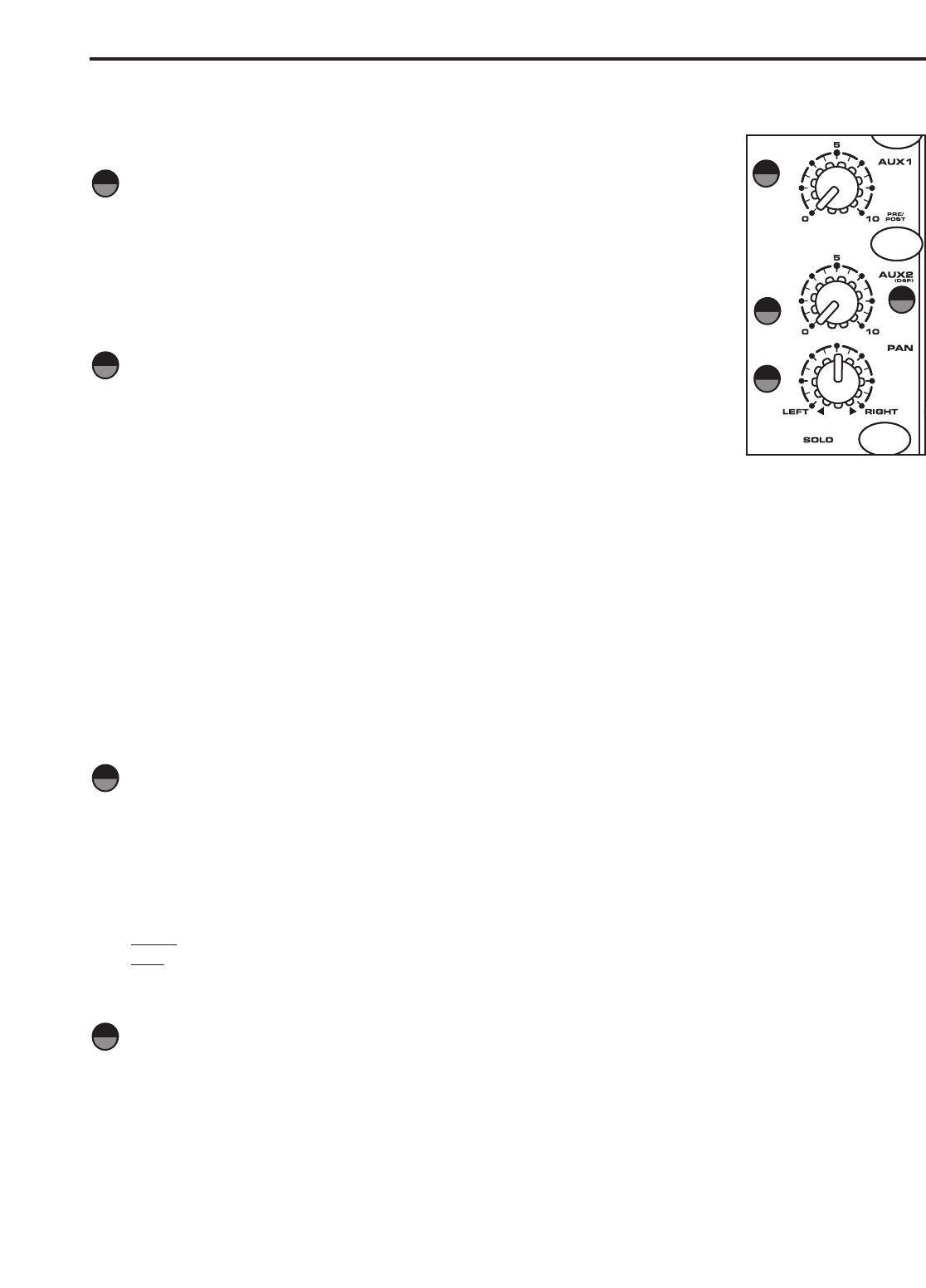
(MONO INPUT CHANNEL CONTINUED)
AUX 1 SEND
The MDR10 has two auxiliary sends which can be used for sending signals to the
external effects devices or for creating a monitor mix. The AUX1 section is often
used for a monitor mix in a live sound mixing, or for a headphone mix in a record-
ing application. Each input channel includes an AUX 1 send which controls the
amount of that channel’s signal that is sent to the AUX 1 bus. The Input channel’s
AUX 1 sends are mixed together and are sent to the AUX 1 OUT jack.
AUX 1 PRE/POST switch
On channels 1 through 6, it is possible to set the Aux 1 control knob to send sig-
nal from before (PRE) or after (POST) the channel fader. Following is a descrip-
tion of the signal paths.
PRE FADER AUX send - If you want to use AUX 1 as a send for a monitor, set the PRE/POST switch to the
up or PRE position. When AUX 1 is set to “PRE”, the channel’s signal will be sent directly to the AUX1 out-
put using the channel AUX 1 control knob. In this mode the channel fader has no effect on the signal being
sent from the AUX1 knob. So in a stage monitor situation, only the Aux 1 knob, and not the channel fader,
control the level sent to the AUX1 output, and therefore, the overall volume of that channel in the monitors.
POST FADER AUX send - If you want to use AUX 1 as a send to an effects processor, set the PRE/POST
switch to the down or POST position. In this mode the channel signal will be sent to the AUX1 output using
the channel AUX 1 control knob in conjunction with the channel fader. So when using AUX 1 for a mix being
sent to an effects processors, the Aux 1 knob, and the channel fader both control the overall level sent to
the AUX1 output. If you are sending to a delay or reverb, when you push the channel fader up you are send-
ing more signal to the delay or reverb. Pull the fader down and you are sending less level to the delay or
reverb. Keep in mind that when the AUX 1 is in POST, the Aux send follows the fader.
AUX 2 / DSP Send
The MDR10 provides high quality, 24 Bit digital effects, and the level of effects can be set independently on
each channel. The channel’s AUX 2/DSP knob controls the amount of signal that is sent to the AUX 2/DSP
bus. The signal of the AUX 2/DSP bus is routed to the internal DSP effects section for onboard signal pro-
cessing. The AUX 2/DSP signal can also be sent to an external effect device connected to the AUX 2 OUT
jack located in the MASTER SECTION jack field.
NOTE
: The channel’s AUX 2/DSP signal is sent to the AUX 2/DSP bus from a location in the signal path
after the channel’s LEVEL control. This is commonly referred to as a POST FADER send. This means that
the amount of signal that is sent to the EFFECT bus will be affected not only by the setting of the AUX
2/DSP knob control, but it will also be affected by the setting of the LEVEL control.
PAN
The MDR10’s PAN control is used to place or position the mono signal into the stereo main Left and Right
MIX bus. You can create a stereo image by panning some input signals to the left and others to the right.
The MDR10’s PAN control is a Power-Pan circuit, which includes a 3dB dip in the center position. This is
desirable since there’s a 3dB increase in gain when the mono input signal is heard in both the Left and
Right MIX bus.
8
11
Controls and Functions
8
9
8
9
10
10
11



